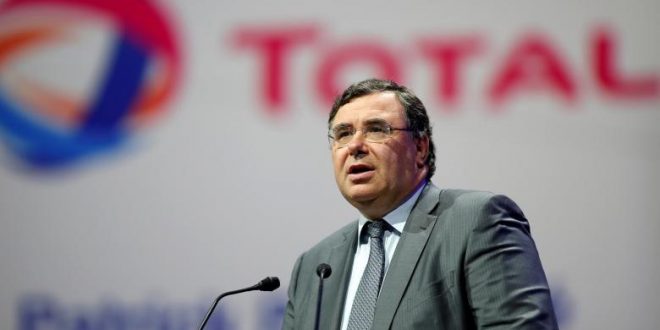The current OPEC non-OPEC output cut deal is starting to bring the global oil market back towards balance. but the agreement will likely need to run until at least the end of next year to fully draw down the overhang of oil stocks. Total CEO Patrick Pouyanne said Wednesday.
`The OPEC Non-OPEC deal is working well…I think the market is slowly rebalancing. the inventories are going down.` Pouyanne told the Oil &. Money conference in London.
Pouyanne said. however. he would reiterate comments he made in January when the OPEC cuts began. that it would take at least two years for the cut deal to fully rebalance the oil market and reduce the overhang of global oil stocks.
`If you have three or four years of oversupply. it takes time to rebalance the market.` he said.
Noting comments made during the recent visit by Saudi Arabia`s King Salman to Moscow to meet Russian President Vladimir Putin. Pouyanne said he was `convinced` the two major oil producers were now pursuing a target of bringing oil prices to $60 b.
During the historic meeting earlier this month. King Salman and Putin discussed extending the deal to keep the OPEC non-OPEC coalition`s market rebalancing efforts on track.
`The meeting…I think cemented the agreement between two of the three main producing countries of the world.` Pouyanne said. `I`m convinced that both of them are targeting a price of about $60 b.`
According to the IEA`s latest monthly oil market report. OECD oil stocks continued falling against the five-year average in August. to reach 170 million barrels above the five-year average. although the total remained above the 3 billion mark. at 3.015 billion barrels.
Global oil stocks are likely to have fallen in Q3 for just the second time since oil prices started collapsing in 2014. the IEA added. noting that stocks are likely to fall by 300.000 b d on average this year.
With current oil prices of around $56 b. Pouyanne said he also saw a new `wave of investment` by US shale producers as drilling efficiencies had lowered break-even costs.
Looking further ahead. however. he repeated concerns voiced over the past 18 months that a the sharp drop in upstream spending by oil majors after the 2014 price slump could create a supply shortage in the next decade.
The number of final investment decision. or FIDS. on projects holding more than 50 million barrels of oil in the four years to 2014 averaged of 35 each year. Pouyanne said. representing a future production capacity of 2.5 million b d. By comparison. the average number of project FIDs a year from 2014 to 2017 fell to 12. he said. representing a supply capacity of 1 million b d which is `probably not enough`.
`Post 2020 sometime. we`ll face an issue with this lower number FIDs…Even if suddenly we decide to do it (take FIDs]…it takes time to bring new capacity to production.` Pouyanne said.
He said strong demand was helping support current oil prices. particularly as the lower price since 2014 had boosted global oil demand.
Since 2015. global oil demand had grown by about 5 million b d. he said. twice as fast at the previous three years.
`You have very strong demand…demand is clearly supported by lower prices.` he said.

 Iran Energy News Oil, Gas, Petrochemical and Energy Field Specialized Channel
Iran Energy News Oil, Gas, Petrochemical and Energy Field Specialized Channel



